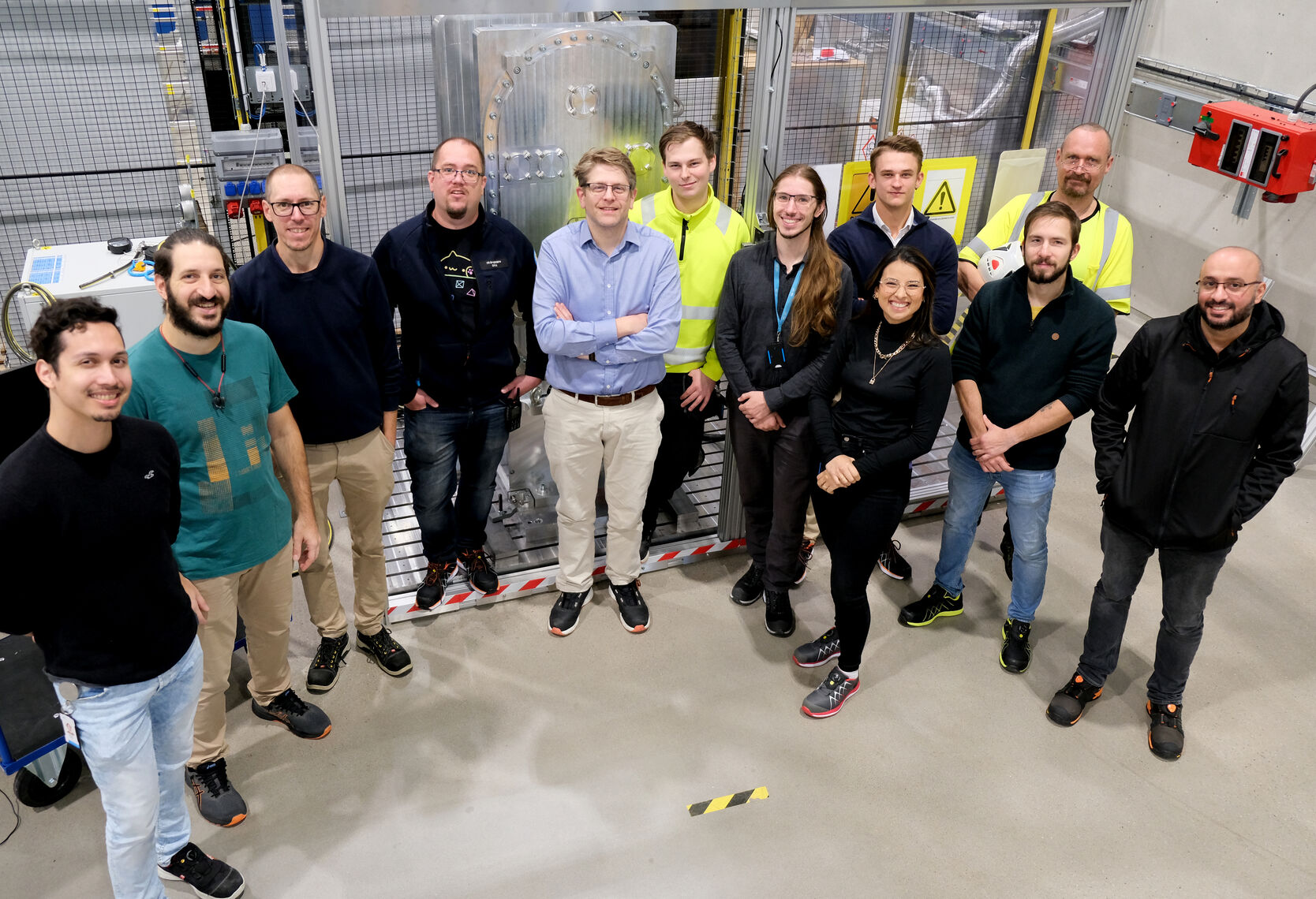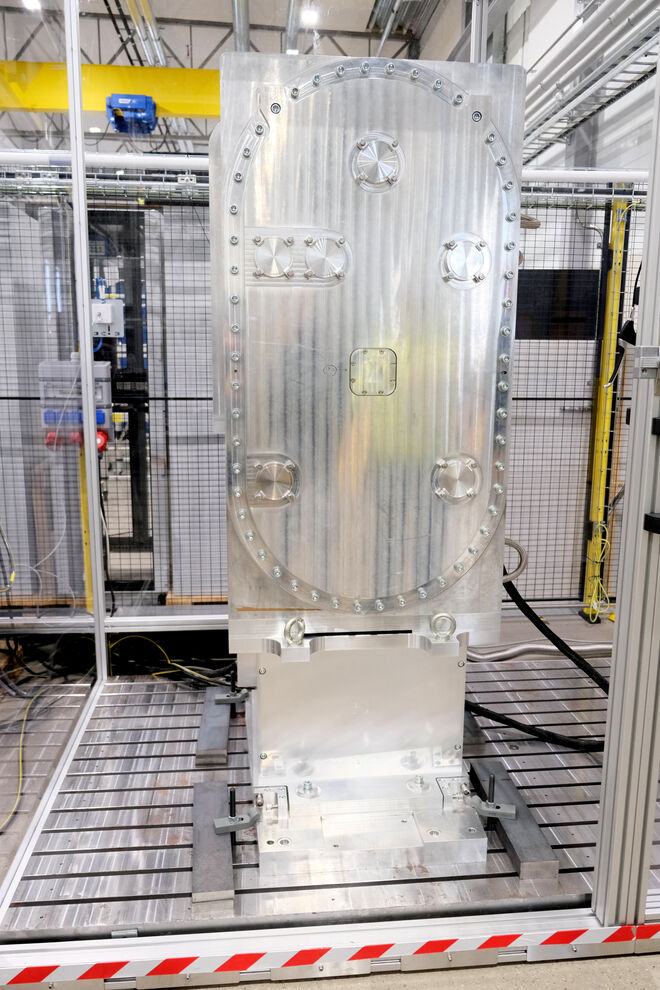
The ESS Neutron Chopper Group has successfully produced the first fast triplet chopper, for the instrument MAGIC. Reaching the maximum operational speed of 154 Hz with two carbon fibre discs and a 14Hz disc in place, acceptance tests will continue to ensure every combination of speeds is possible.
The first completely in-house produced chopper system for ESS has recently been finalised and is now in an ongoing testing phase in the on-site chopper workshop.
This is the first fast chopper system conceptualised, designed, built and tested by the ESS Common Chopper Project. The installation of the first triplet chopper system for the scientific instrument MAGIC, planned for the first quarter of 2024, will be followed by similar chopper systems for the DREAM, CSPEC and T-REX instrument beamlines.
A neutron chopper is a rotating device designed to shape neutron beams in both time and space. By using a rotating disk with cut-outs, these choppers effectively divide the long pulse into smaller chunks, allowing researchers to select the desired energy range suitable for the instrument and experiment conducted.
Around 85 chopper discs will be installed for the first 15 instruments at ESS, 40% of which are deliveries from the Common Chopper Project. The speeds of the rotating discs vary from 14 Hz to 350 Hz – which at maximum speed run at approximately 3000 km/h. ESS boasts a variety of chopper configurations, including single, double, triple, and quadruple choppers. While higher numbers of choppers offer enhanced precision and flexibility, the mechanical complexity increases. In most cases the single-disc chopper is enough to do the job. The triplet and quadruplet chopper concepts are specifically tailored for the ESS long pulse source.
The precise phasing of the choppers will be synchronised with the ESS timing system, in tandem with the proton beam at 14 pulses per second.
First Fast Triplet Chopper at ESS
Inside this shiny structure, the internal mechanism consisting of spinning carbon fibre discs from Airbus operate at 154 Hz or 10,000 rpm, equalling 154 revolutions per second. Each disc has roughly the diameter of a car tire. If a car tyre rotated this fast you would arrive in Stockholm in 30 minutes.The fastest choppers at ESS cut thris trip to 12 mins.
When ESS goes live and these discs are in constant motion, they will cover each more than 5 million kilometres per year, surpassing the distance to the sun in their operational lifetime.


























